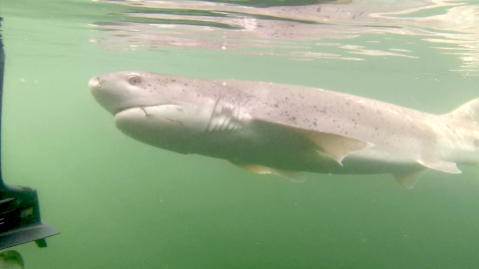Welcome! This project recently migrated onto Zooniverse’s new architecture. For details, see here.

Help us identify and count sharks in the waters around New Zealand so that we can start filling in some of the missing data that which is important for the conservation of sharks, rays, and skates. Who knows what you might find?
Learn moreYou can do real research by clicking to get started here!
Zooniverse Talk
Chat with the research team and other volunteers!
Shark Spy Statistics
View more statsKeep track of the progress you and your fellow volunteers have made on this project.
Every click counts! Join Shark Spy's community to complete this project and help researchers produce important results. Click "View more stats" to see even more stats.
Percent completeBy the numbers
Message from the researcher
Connect with the research team on Talk to learn more about this project!
About Shark Spy
Shark researchers around New Zealand (and much of the world) are missing several key pieces of information on shark populations including diversity, seasonality, coastal movement, residency, and population structure (age, sex, size). These data are critical for conservation and monitoring population status. Shark Spy is a citizen science project with the dual aim of (1) collecting baseline data on sharks local to New Zealand coasts to fill these gaps and (2) connecting schools and the local community to their coastal environment via contribution and collaboration in the project. It is a project funded by the Curious Minds Participatory Science Platform and co-ordinated by the Otago University Marine Studies Centre.
The data is collected using baited underwater video (BUV). Videos are great as they contain a lot of information that can be extracted easily, and that's where you come in. The videos collected by school or community groups are converted to images and uploaded here as a way for us to allow those groups to analyse the data, as well as anyone who is interested. We want to know what kind of sharks we're seeing, along with a count of how many there are at one time. This count represents a relative abundance which is one of the major missing bits of info we need. These counts relate to a location and a time of year so we also automatically figure out seasonality and distribution.